The Rise of Eco-Friendly Travel: Sustainable Practices in Aviation
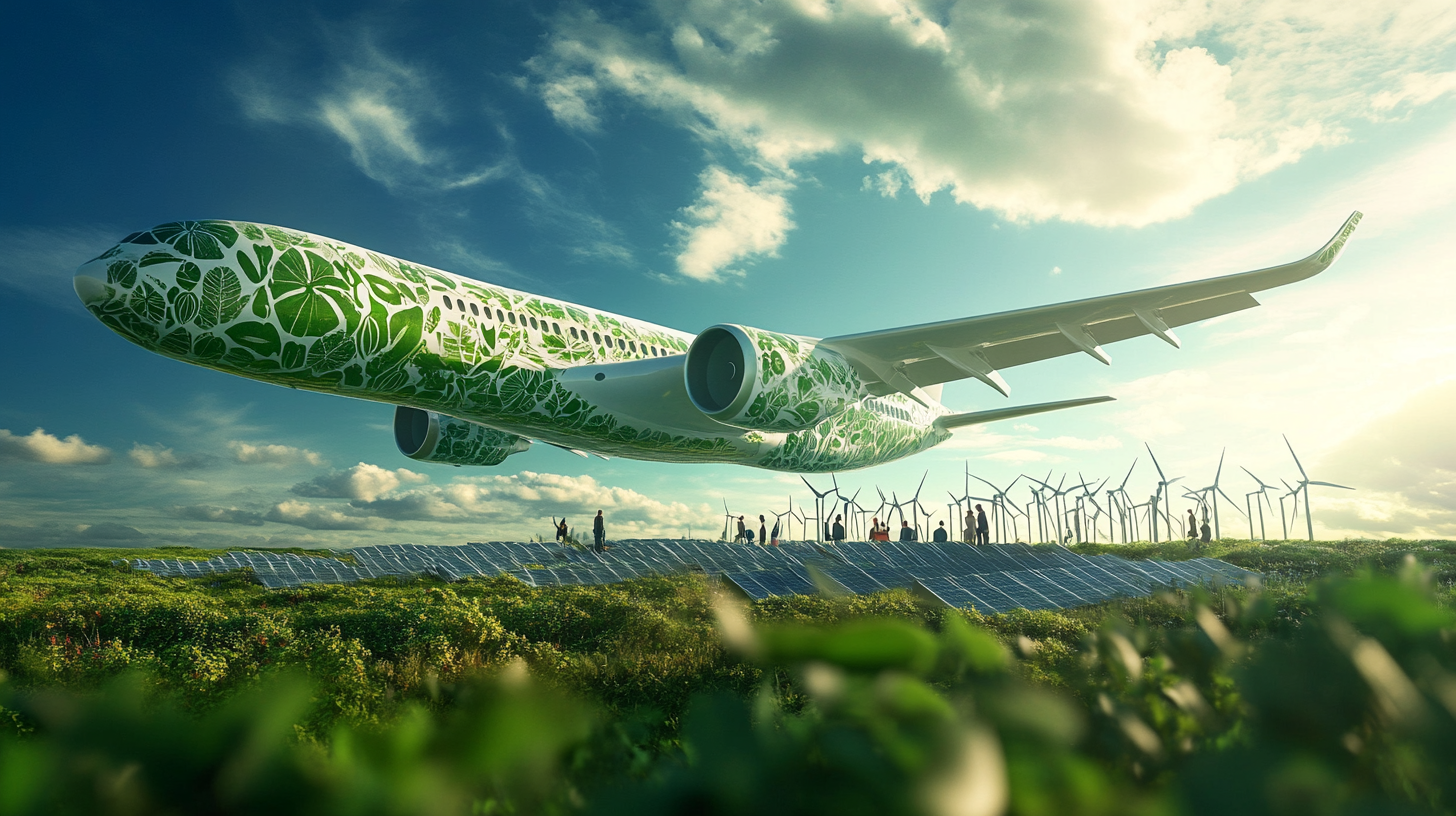
In an era where environmental consciousness is at the forefront of global discourse, the aviation industry finds itself under increasing scrutiny. Responsible for approximately 2-3% of global CO₂ emissions, air travel significantly impacts climate change. The sight of contrails crisscrossing the sky, once a symbol of human ingenuity and connection, now also serves as a stark reminder of the environmental cost of flight. However, a green revolution is underway, promising a more sustainable future for aviation. From the development of cutting-edge Sustainable Aviation Fuels to passengers making mindful travel choices, a collective effort is transforming how we fly. This article explores how airlines and travelers alike are embracing eco-friendly practices, charting a course toward a cleaner, greener horizon.
The Environmental Impact of Aviation
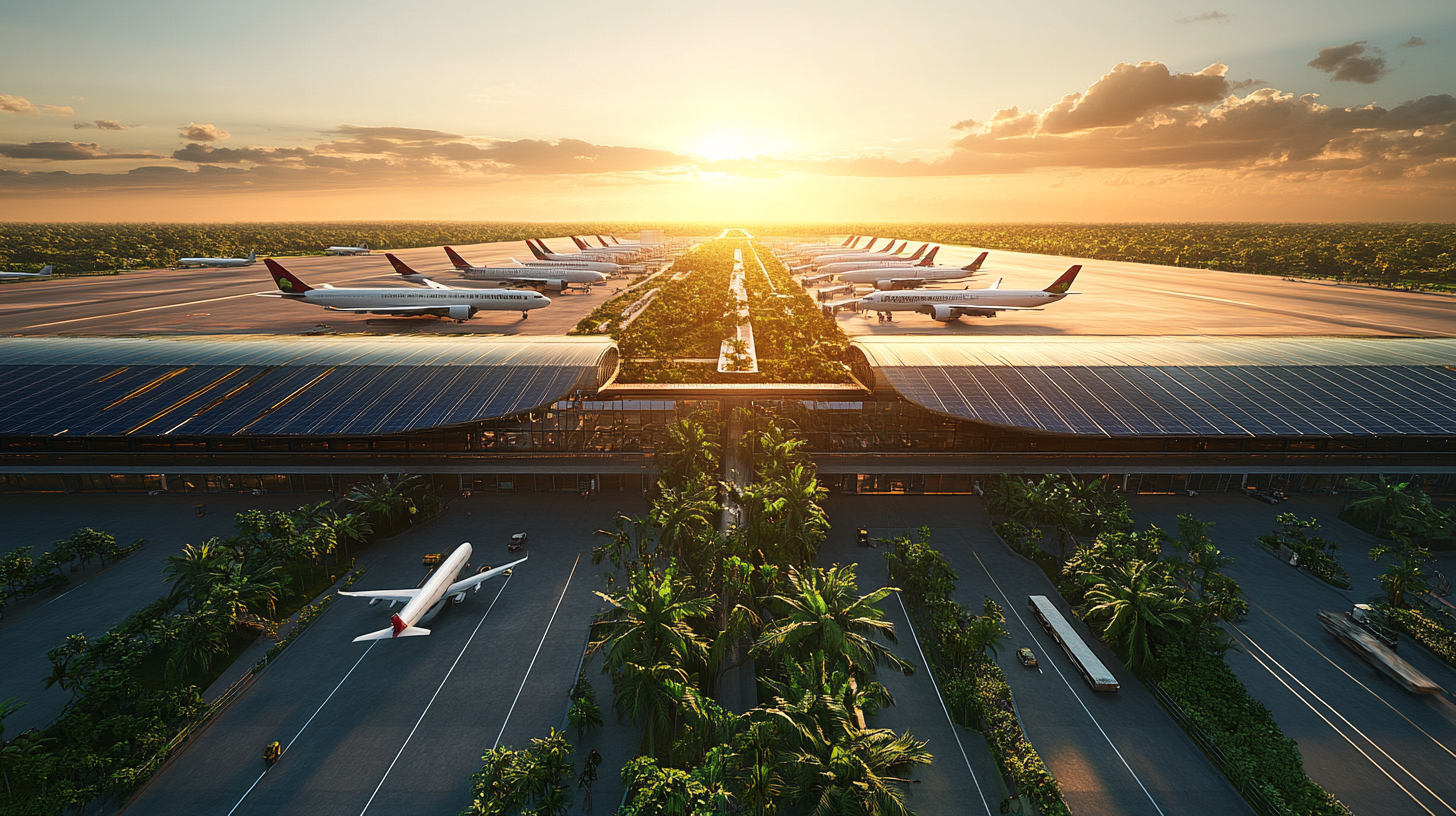
The aviation sector plays a pivotal role in global connectivity, enabling the movement of people and goods across continents in mere hours. However, this convenience comes at an environmental cost, with the industry contributing notably to greenhouse gas emissions, primarily through CO₂ released from jet fuel combustion. With growing awareness of climate change’s dire consequences, such as extreme weather events and biodiversity loss, there’s mounting pressure on airlines to reduce their carbon footprints. The industry’s ambition to achieve net-zero emissions by 2050, as outlined in initiatives like International Air Transport Association’s sustainability strategy , underscores a commitment to sustainability. This goal aligns with global efforts outlined in agreements like the Paris Climate Accord but also presents considerable challenges requiring collaborative efforts, policy support, financial investment, and technological advancements.
Innovations in Sustainable Aviation Technology
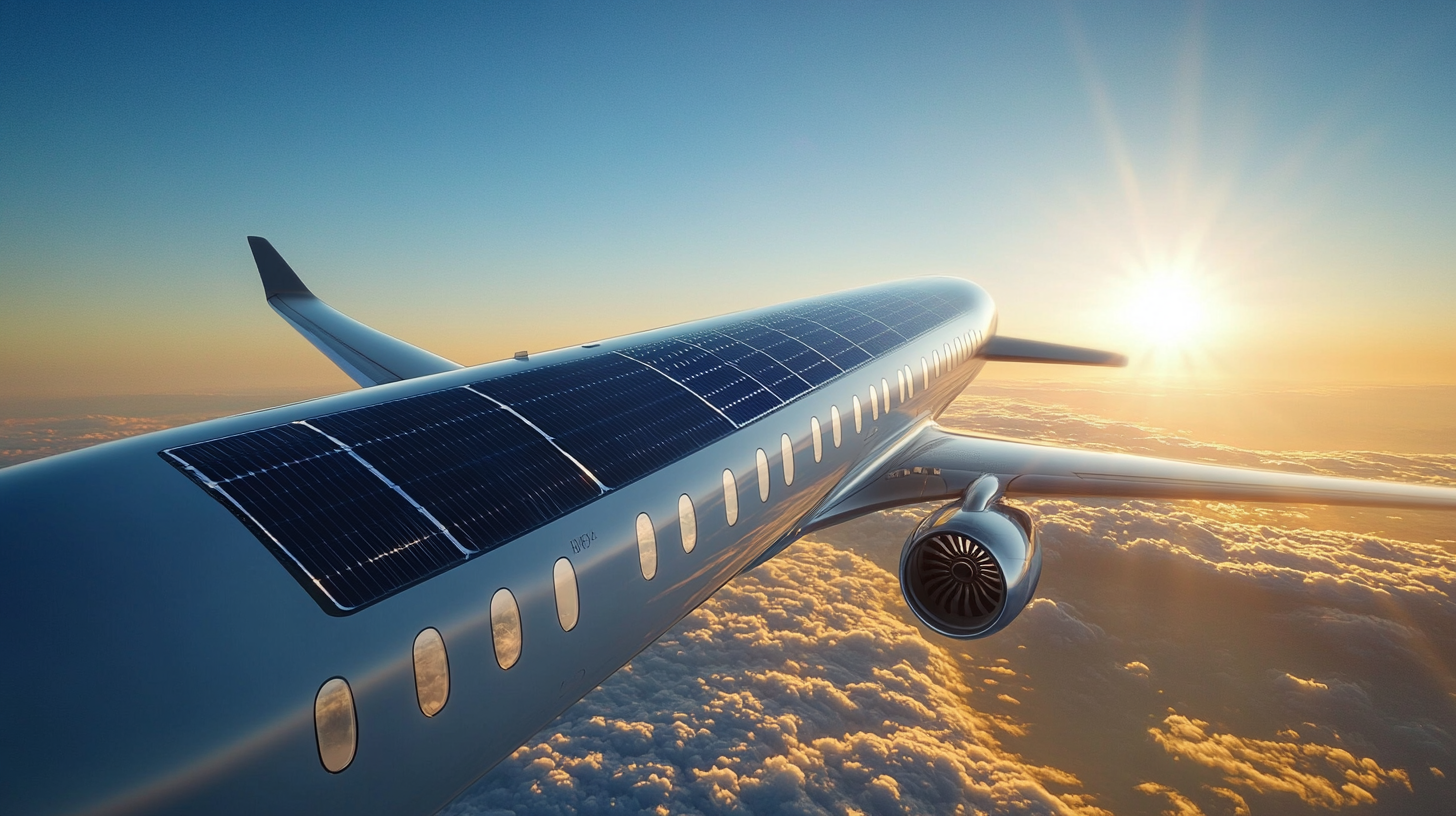
Sustainable Aviation Fuels (SAFs)
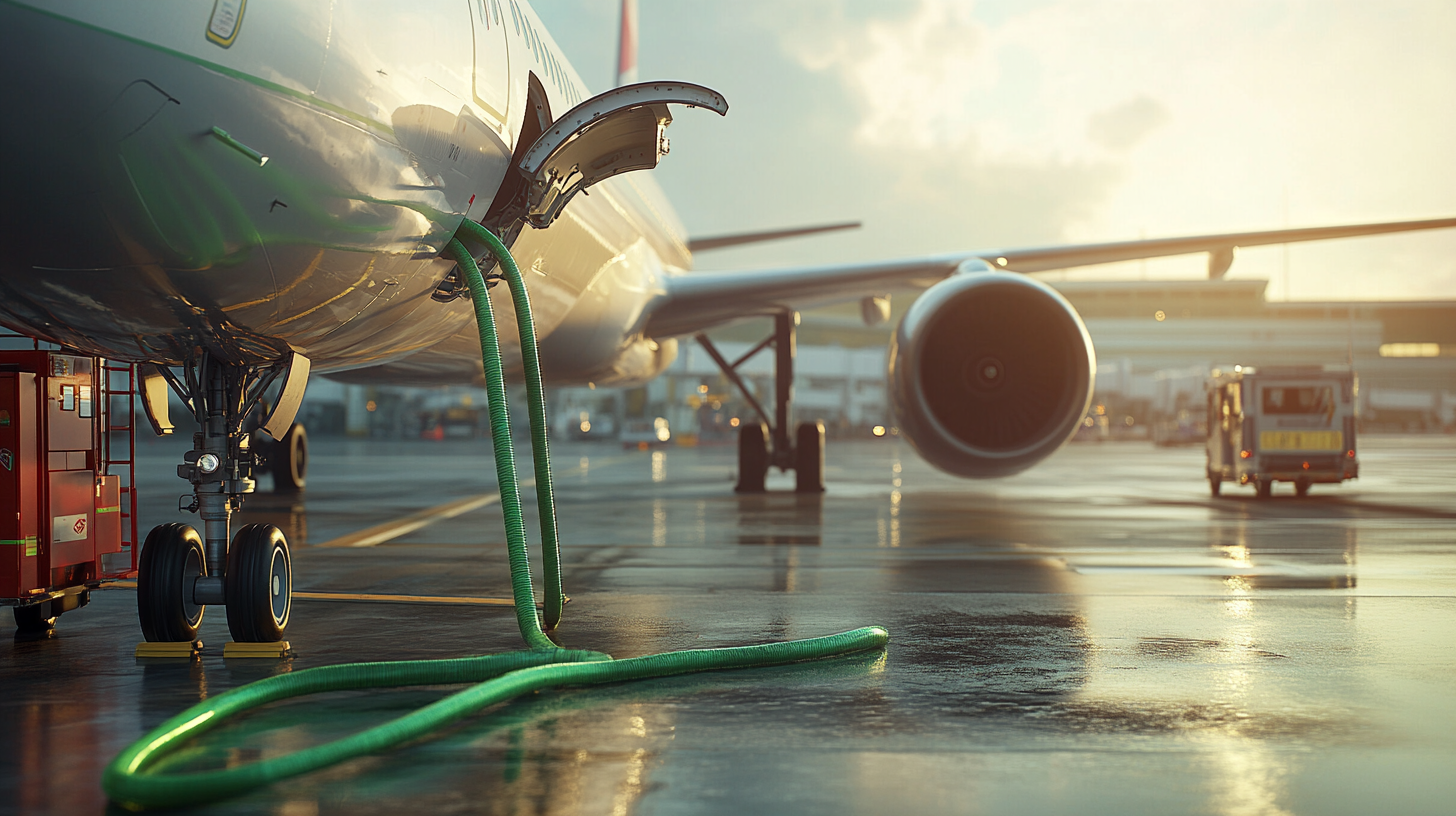
At the forefront of efforts to reduce aviation emissions are Sustainable Aviation Fuels (SAFs). Derived from renewable resources like waste oils and agricultural residues, SAFs offer a promising alternative to fossil-based jet fuels. By utilizing materials that would otherwise contribute to waste, SAFs embody a circular approach to resource management. They can decrease greenhouse gas emissions by up to 80% compared to traditional jet fuel over their lifecycle. This significant reduction stems from the fact that the carbon dioxide absorbed by the plants used to produce the biofuel offsets the emissions produced during combustion. Airlines such as United Airlines and Air France-KLM have begun incorporating SAFs into their operations, marking significant strides toward cleaner air travel. Despite current challenges, such as higher costs and limited availability, the adoption of SAFs represents a critical step in curbing aviation’s environmental impact and transitioning to a more sustainable mode of air travel, as outlined in The benefits and challenges of Sustainable Aviation Fuels in reducing emissions .
Electric and Hybrid Aircraft

Electric and hybrid aircraft represent a leap forward in sustainable aviation technology, emerging as promising solutions for zero-emission flights. These pioneering technologies utilize electric propulsion systems, either powered entirely by electricity from batteries or fuel cells, or in combination with conventional engines in hybrid configurations. The use of electric propulsion reduces reliance on fossil fuels, thereby decreasing fuel consumption and emissions. Additionally, electric motors are inherently more efficient and quieter than traditional jet engines, enhancing passenger comfort and reducing noise pollution around airports. While these aircraft are still in developmental stages, their potential is particularly significant for short-haul flights and regional connectivity. Airlines and manufacturers are actively investing in these technologies, conducting test flights, and collaborating on research, anticipating a future where electric aviation becomes a mainstream reality, as detailed in Advancements in electric and hybrid aircraft development .
Hydrogen-Powered Planes
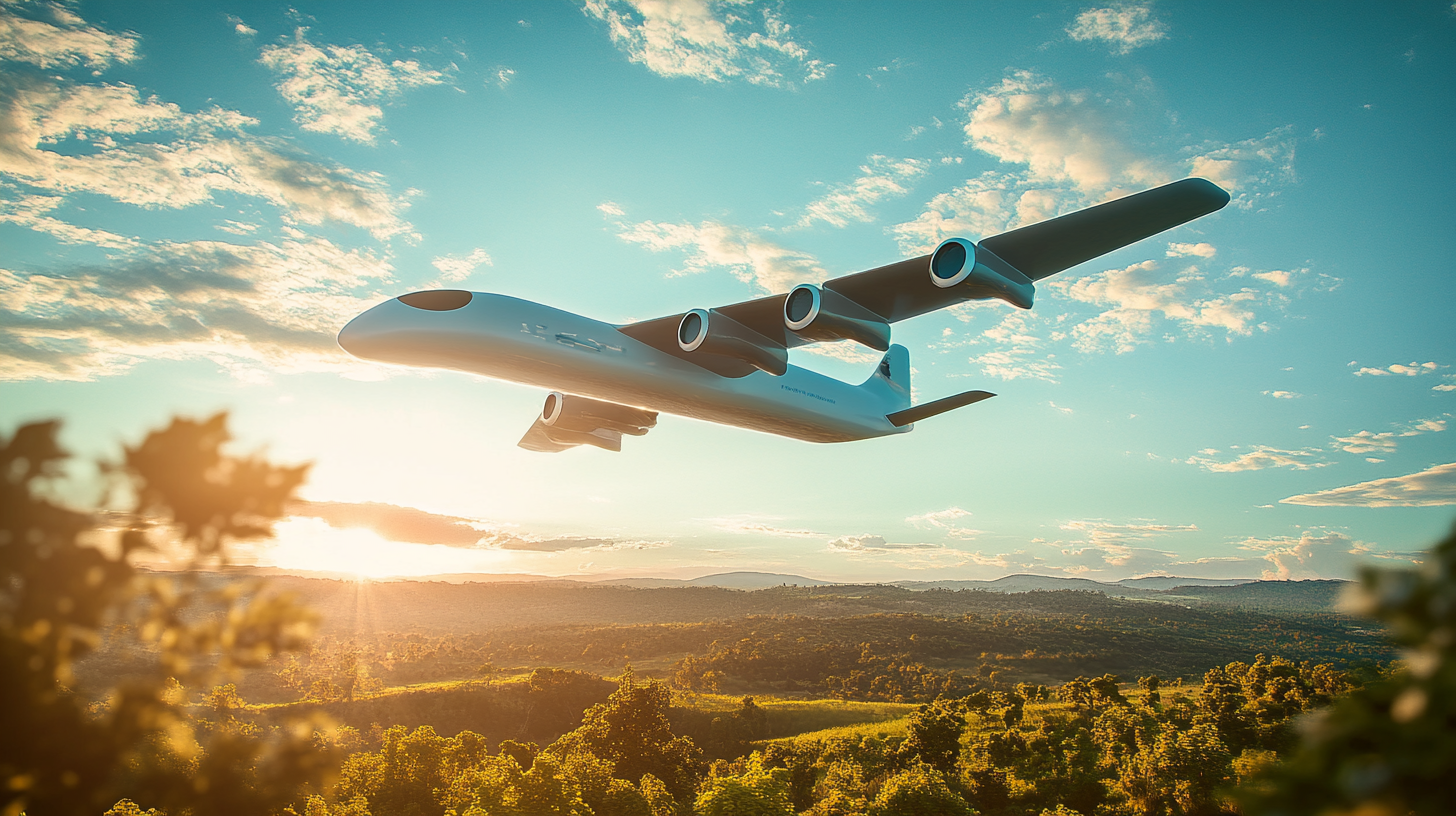
Hydrogen propulsion presents another avenue for achieving zero-emission aviation. When used as a fuel, hydrogen produces only water vapor upon combustion, making it an attractive clean energy source. The aviation industry is exploring hydrogen’s potential, with the possibility of using it in modified jet engines or fuel cell systems. However, current challenges include the need for new infrastructure to produce, store, and distribute hydrogen safely, as well as ensuring that hydrogen is produced using renewable energy to maintain overall sustainability. Energy supply solutions are also required to support large-scale adoption. Ongoing research aims to overcome these hurdles, positioning hydrogen as a viable option for sustainable long-haul flights in the not-too-distant future, as explored in The challenges and potential of hydrogen in aviation .
Eco-Friendly Aircraft Designs

Innovative aircraft designs are significantly advancing sustainability efforts. Engineers are developing models that feature improved aerodynamics to reduce drag, such as refined wing shapes and smoother surfaces. The utilization of lighter materials, like advanced composites, helps decrease the overall weight of the aircraft, directly impacting fuel efficiency. Additionally, advanced engines with higher bypass ratios and improved combustion processes contribute to lower fuel consumption and reduced emissions. These cumulative design improvements not only enhance performance but also play a pivotal role in minimizing aviation’s environmental footprint, as detailed in How eco-friendly aircraft designs reduce emissions , steering the industry toward a greener future.
Airline Sustainability Initiatives
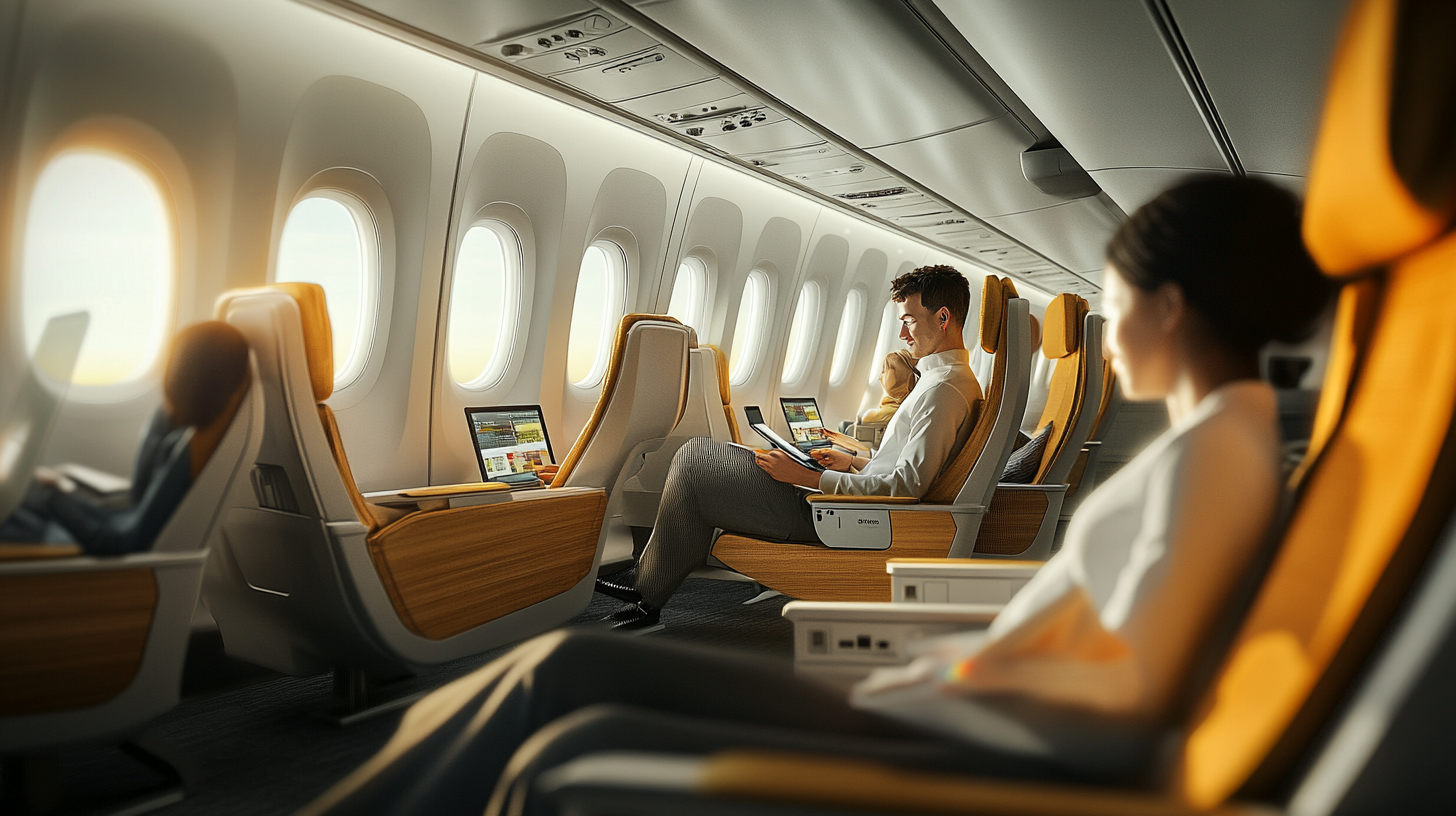
Airlines worldwide are taking actionable steps to promote sustainability, implementing strategies that encompass various aspects of their operations. Key initiatives include:
Reducing Single-Use Plastics and Recycling

Carriers are minimizing the use of single-use plastics in-flight, opting for biodegradable or reusable alternatives. For instance, plastic straws, stirrers, and cutlery are being replaced with those made from bamboo or other sustainable materials. Recycling programs are being enhanced both in the air and on the ground to reduce waste, reflecting a broader commitment to environmental responsibility, as highlighted in Airlines leading the way in reducing in-flight plastic waste , and catering to the growing consumer demand for eco-friendly practices.
Carbon Offset Programs

Carbon offsetting allows airlines to compensate for their emissions by investing in environmental projects. Companies like Delta Air Lines and Lufthansa offer passengers the option to purchase offsets, funding initiatives such as reforestation and renewable energy development. The adoption of carbon offset programs underscores the industry’s recognition of its environmental impact, as discussed in The effectiveness of carbon offsetting in aviation , and its willingness to engage in immediate actions toward mitigation while longer-term technological solutions are being developed.
Investing in Fuel-Efficient Aircraft

Modernizing fleets with fuel-efficient aircraft reduces emissions and operational costs. Newer models feature advanced engines with improved fuel efficiency and reduced emissions. The adoption of lighter materials, such as advanced composites, further contributes to significant fuel savings by decreasing the aircraft’s overall weight. This investment in the latest technology, as illustrated in The impact of fuel-efficient aircraft on airline sustainability , underscores airlines’ dedication to long-term sustainability and reflects their commitment to minimizing environmental impact while maintaining operational efficiency.
Sustainable In-Flight Materials
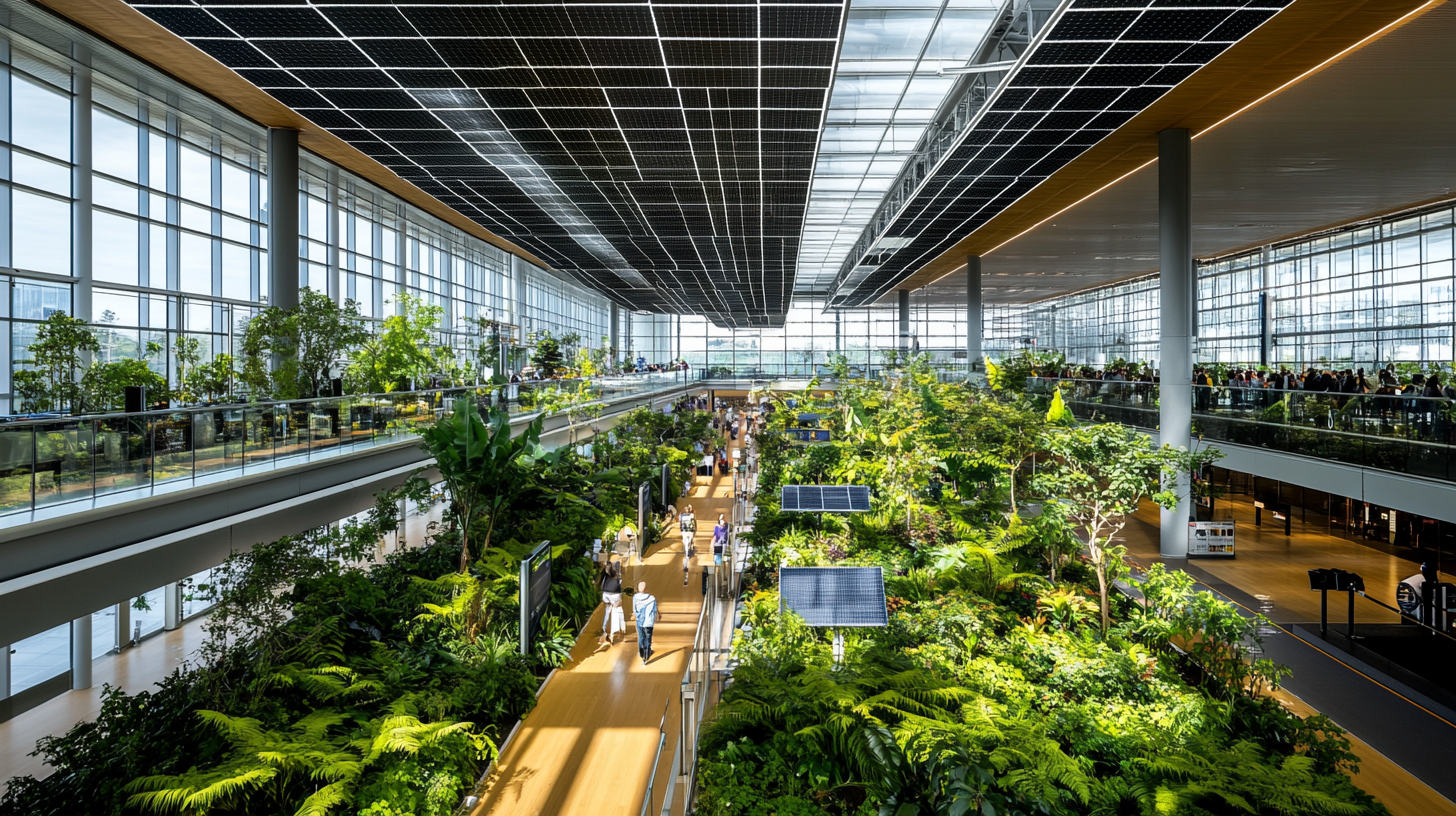
Beyond fuel considerations, airlines are turning their attention to the materials used onboard, embracing sustainability in every aspect of the passenger experience. This includes sourcing eco-friendly textiles for seat coverings and carpets, which may be made from organic or recycled materials. Service items such as cups, napkins, and meal packaging are being redesigned to be biodegradable or compostable, reducing the environmental impact post-use. By integrating sustainable materials into the cabin environment, airlines demonstrate an all-encompassing approach to sustainability, as detailed in How airlines are adopting sustainable in-flight materials , that extends from operations to the customer interface, reinforcing their commitment to environmental stewardship.
Environmental Partnerships and Conservation Efforts
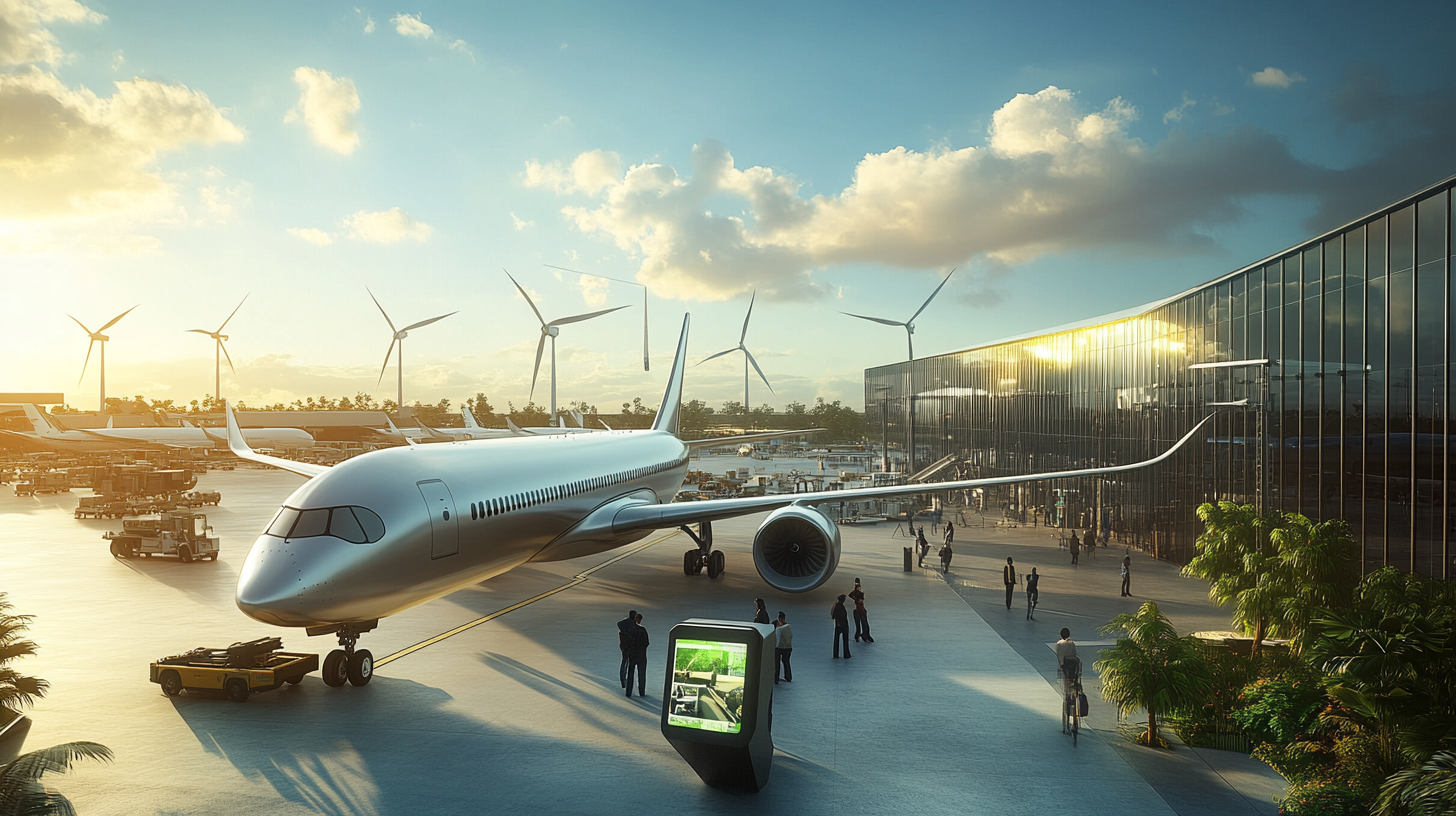
Collaborations with environmental organizations facilitate tree planting, wildlife conservation, and community initiatives. These partnerships enhance airlines’ sustainability profiles and engage passengers in environmental stewardship. By aligning with reputable organizations, airlines can ensure that their contributions support effective, impactful projects that advance global environmental goals, as seen in Airline partnerships with environmental organizations impact .
Airports Embracing Sustainability

Airports, as integral components of the aviation ecosystem, are adopting green practices to reduce their environmental impact. Examples include:
Energy Reduction and Renewable Investments
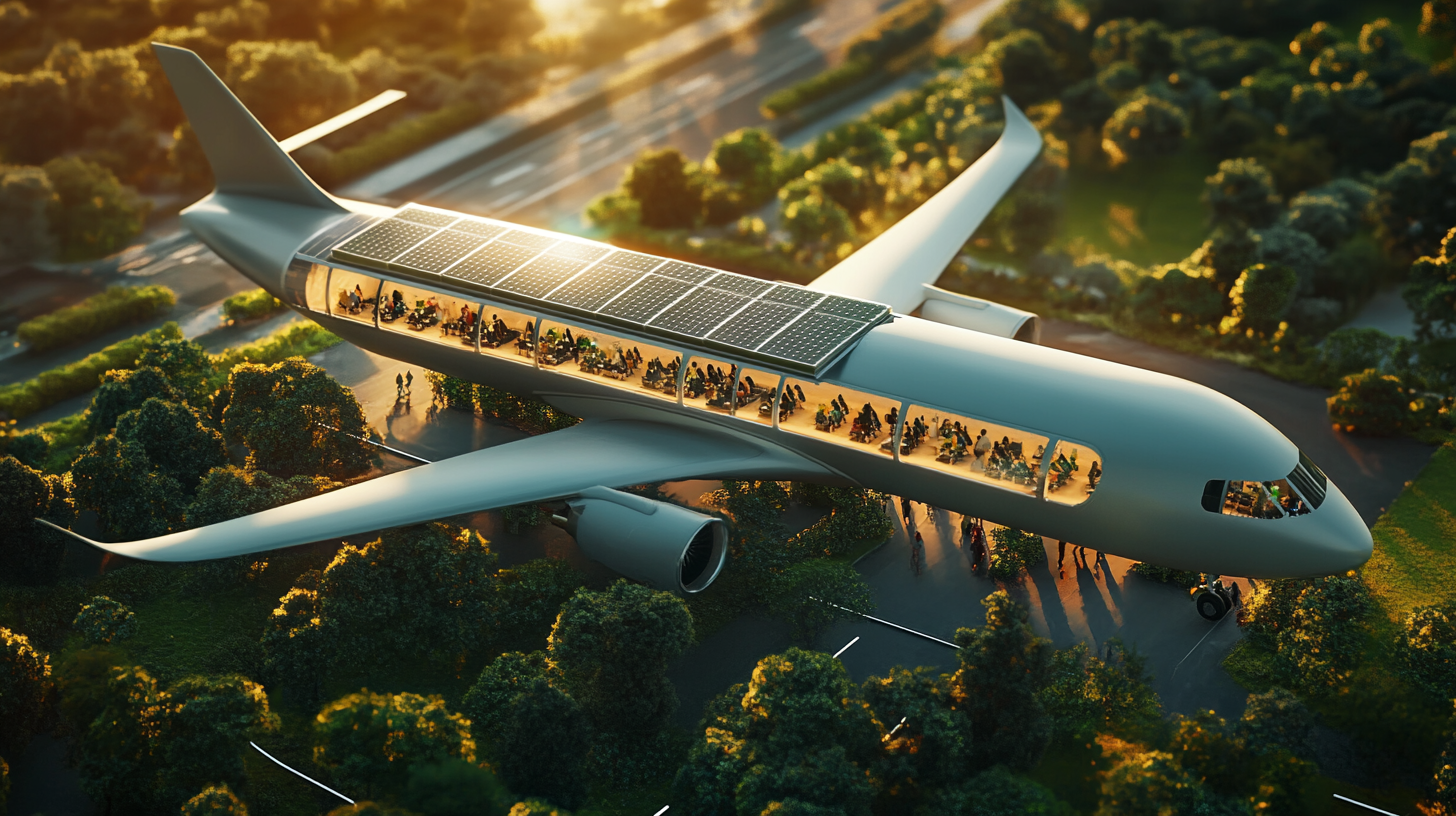
Airports are implementing energy-efficient technologies and investing in renewable energy sources. Measures such as LED lighting, solar panels, and geothermal heating reduce energy consumption and emissions. These measures collectively reduce energy consumption and emissions, contributing to the sustainability of both the airport and the broader aviation industry, as outlined in Airports investing in renewable energy for sustainability .
Ambitious Sustainability Goals

Facilities like London Gatwick, London Luton, and Manchester Airports Group have set aggressive targets for carbon neutrality. By leveraging digital solutions and cloud-based management systems, they enhance operational efficiency and minimize their carbon footprints. These comprehensive efforts not only minimize their carbon footprints but also position these airports as leaders in environmental stewardship, as detailed in Airports’ journey toward carbon neutrality .
Promoting Eco-Friendly Choices

Airports encourage sustainable practices among stakeholders by supporting electric vehicle use, providing charging stations, and offering incentives for eco-friendly transportation options. By fostering an environment that promotes eco-friendly choices, airports contribute to a reduction in overall emissions associated with air travel, as explored in Airports promoting sustainable transportation options .
The Role of Travelers in Promoting Sustainability

Passengers play a vital role in advancing eco-friendly travel. Actions travelers can take include:
Choosing Eco-Friendly Airlines

Selecting airlines committed to sustainability supports their efforts and encourages industry-wide change. Carriers like KLM, Delta, and Virgin Atlantic are recognized for their green initiatives. Passengers can research airlines’ sustainability policies and performance, sometimes accessing sustainability reports like those in Airline sustainability performance reports , or third-party assessments. By favoring environmentally responsible airlines, travelers can help drive industry-wide change toward more sustainable practices.
Packing Light

Reducing luggage weight decreases the aircraft’s overall mass, leading to lower fuel consumption and emissions. By considering what is truly necessary for their trip and opting for lighter essentials, passengers can collectively make a significant impact. Mindful packing not only benefits the environment but can also enhance the travel experience by simplifying logistics.
Offsetting Carbon Footprints
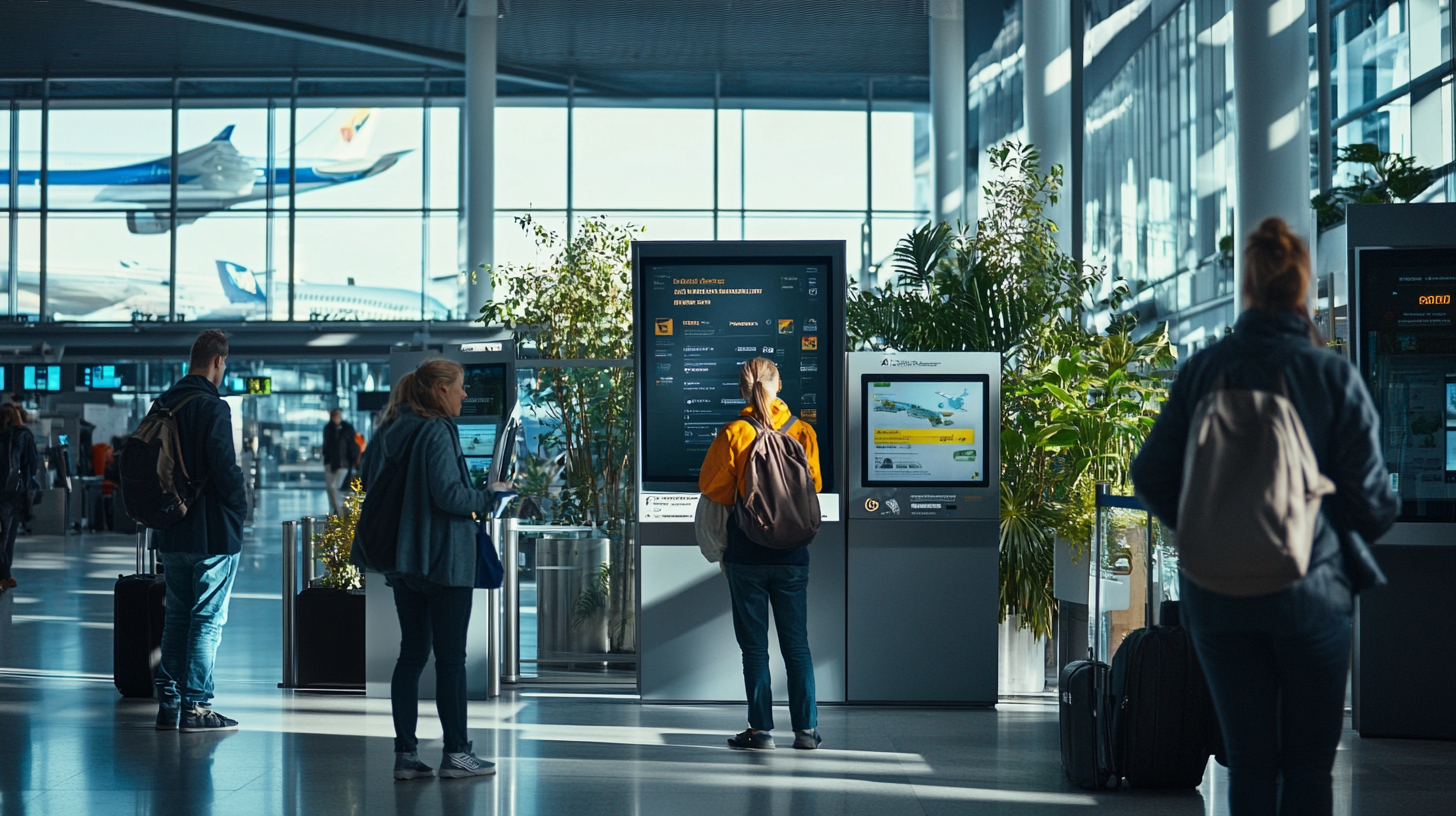
Travelers can participate in carbon offset programs offered by airlines or third-party organizations, balancing out the environmental impact of their flights. By calculating the emissions associated with their specific flight and investing accordingly, passengers can balance out their personal contribution to greenhouse gas emissions, as explained in How to offset your flight’s carbon footprint . While offsetting does not eliminate emissions, it supports broader efforts to combat climate change and encourages the development of sustainable practices.
Selecting Non-Stop Flights

Non-stop flights are more fuel-efficient than those with layovers, as takeoffs and landings consume significant energy. By choosing direct flights, passengers can minimize the number of takeoff and landing cycles, resulting in lower overall fuel consumption and emissions for their journey. This conscious choice contributes to sustainability and often provides the added benefit of reduced travel time.
Consumer Awareness Driving Change
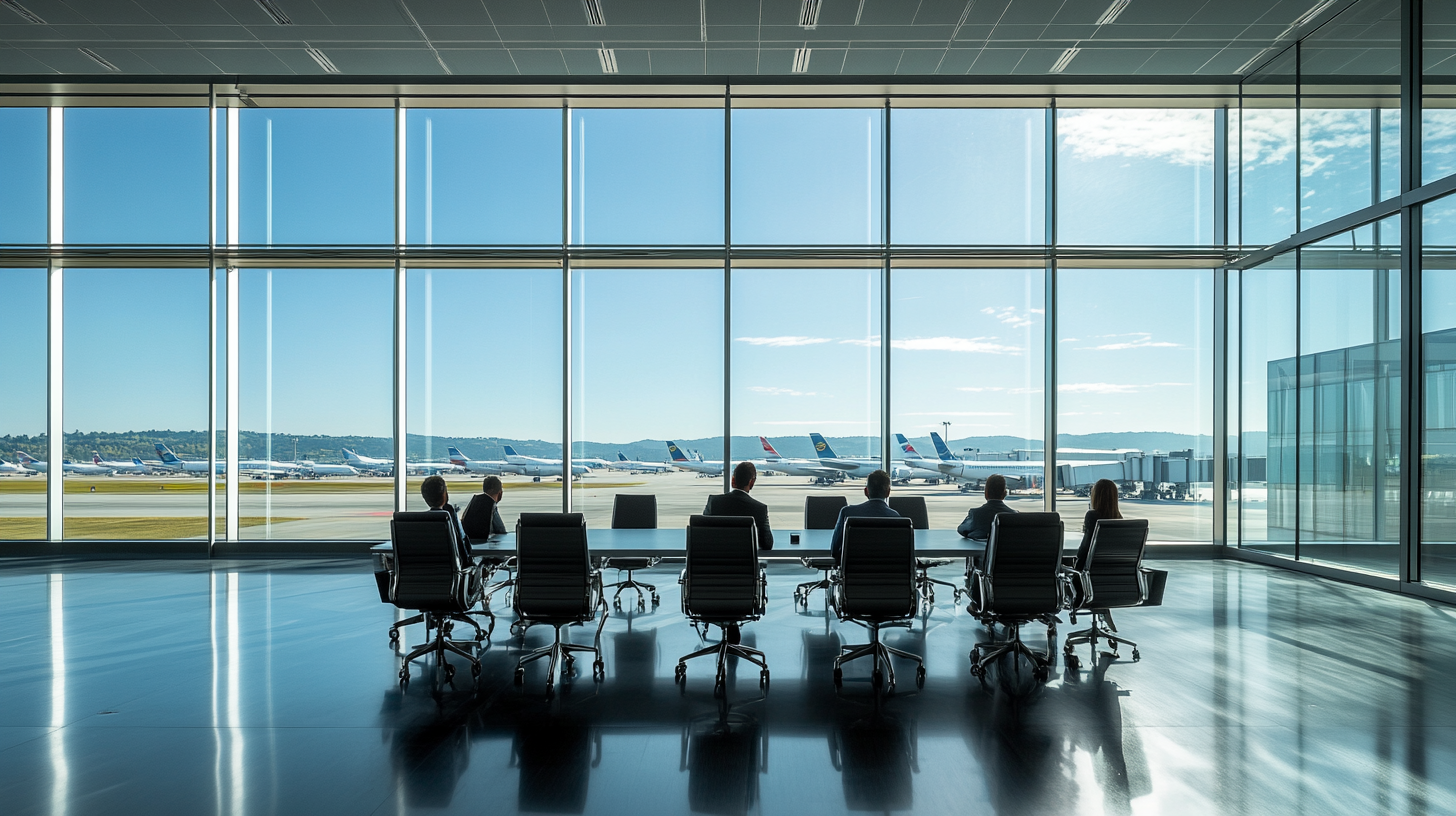
As awareness of aviation’s environmental impact grows, consumer demand for sustainable options increases. This shift influences airlines to prioritize green practices, fostering a more sustainable industry. This collective action fosters a more sustainable industry, as highlighted in The impact of consumer demand on airline sustainability , encouraging airlines to adopt eco-friendly initiatives to meet customer expectations and remain competitive.
Collaborative Efforts and Regulatory Support
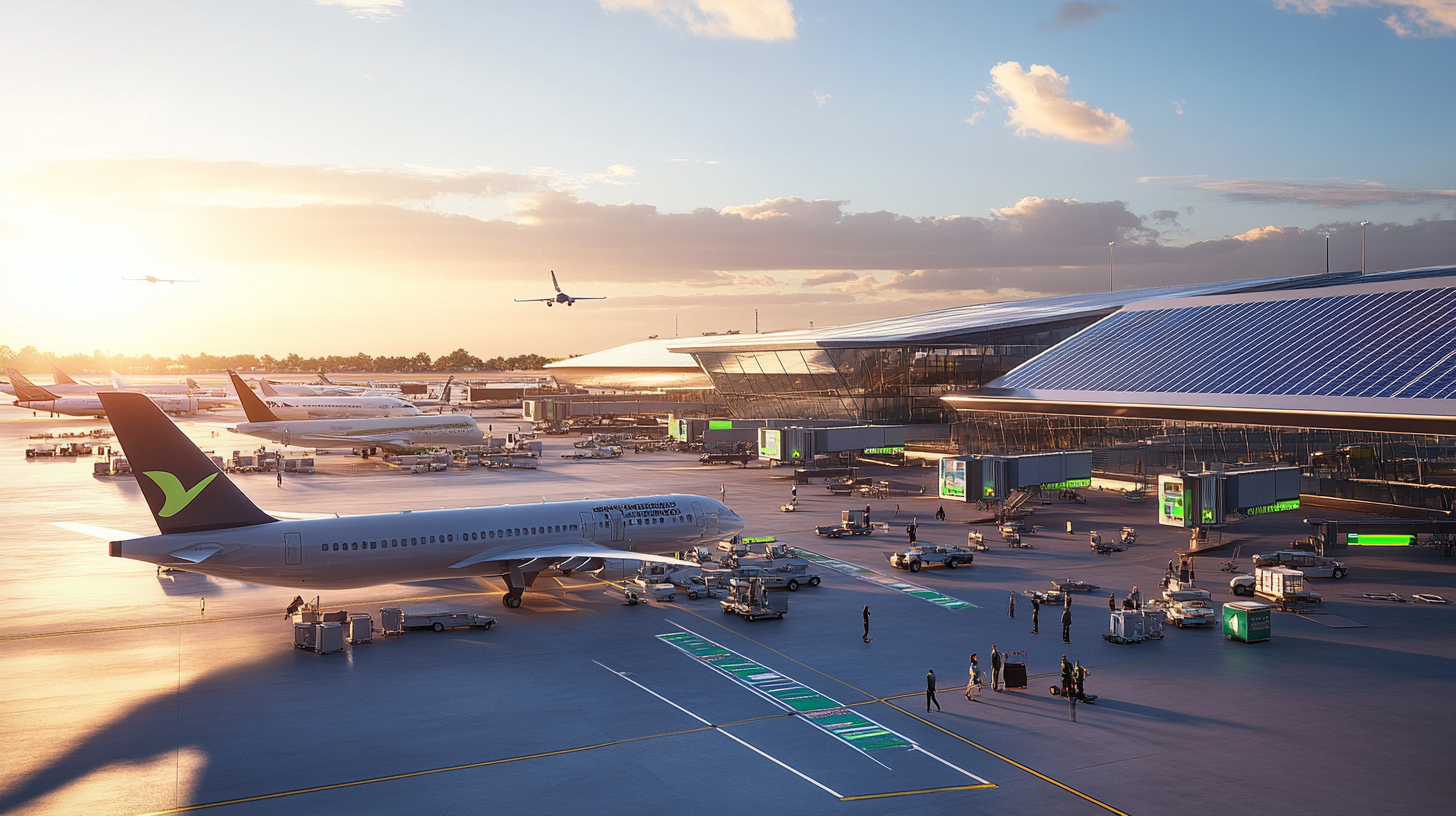
Achieving meaningful sustainability advancements requires collaboration. Key aspects include:
Industry Partnerships
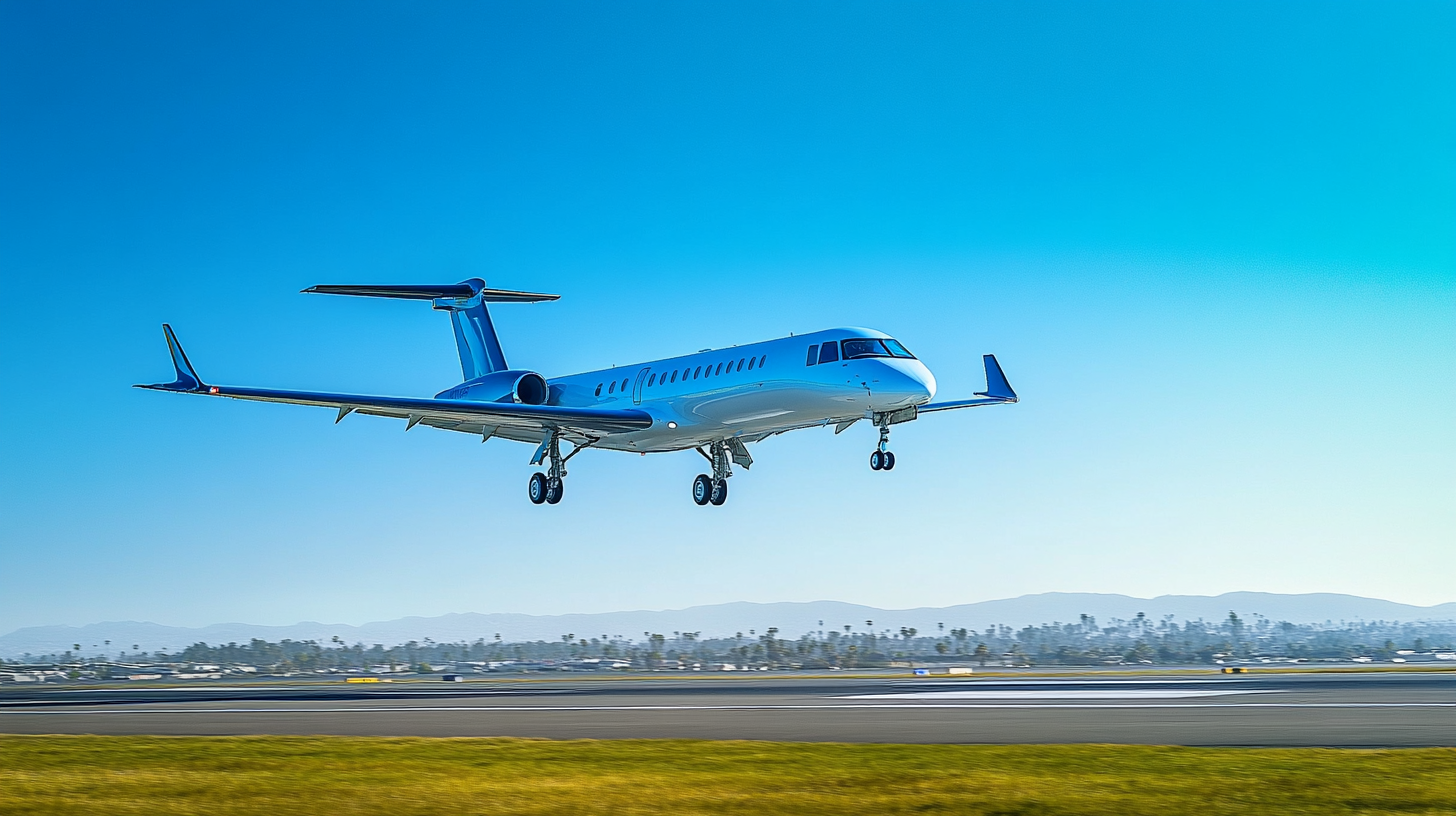
Airlines, manufacturers, and technology firms are working together to develop and implement sustainable technologies and practices. These partnerships exemplify a unified commitment to transforming aviation into a more environmentally responsible sector, as detailed in Collaborative efforts in aviation sustainability . By sharing knowledge and resources, industry stakeholders can accelerate innovation and overcome challenges more effectively.
Regulatory Initiatives
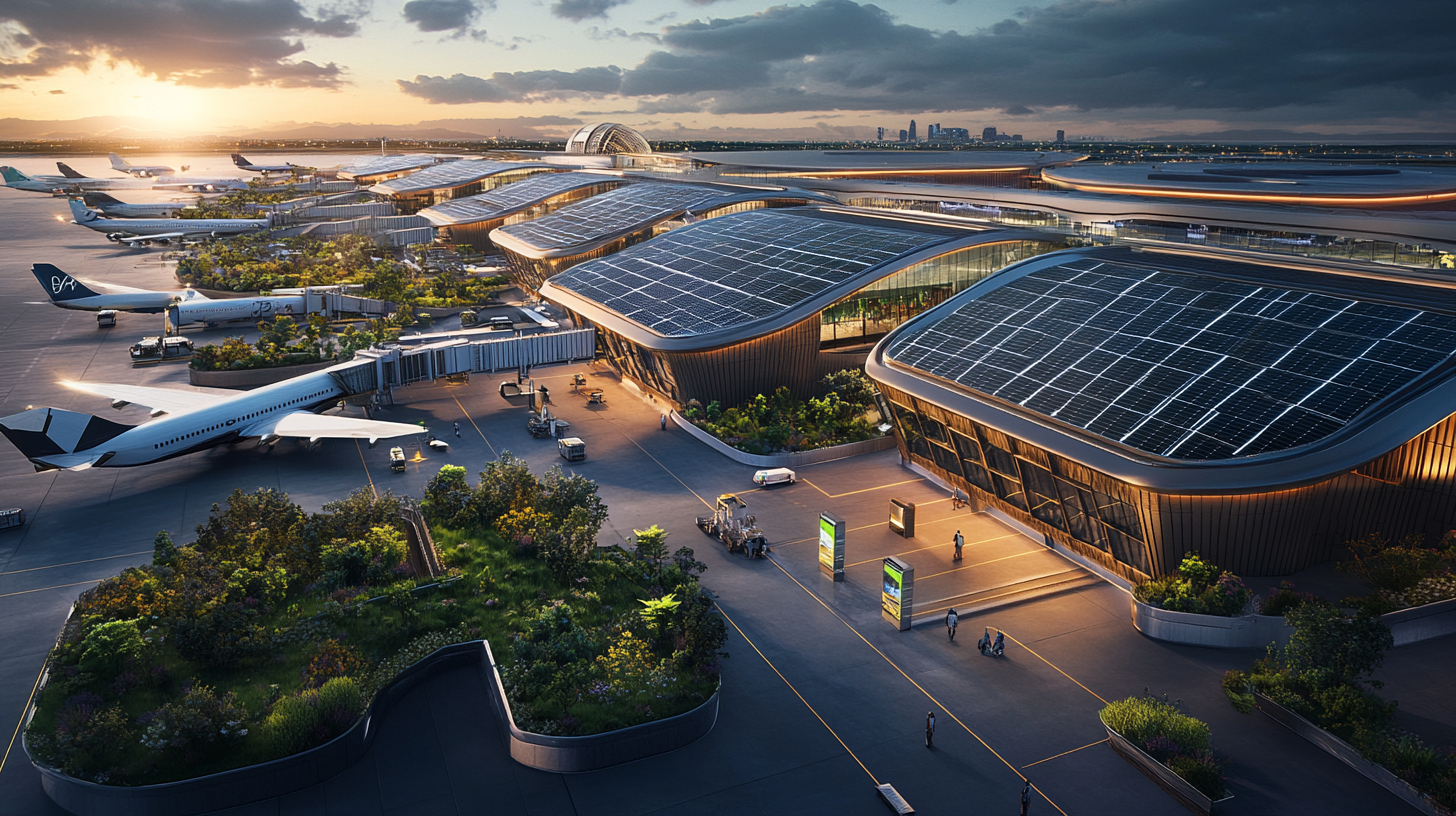
Governments and international bodies are establishing policies and regulations that promote sustainability, such as emissions trading schemes and incentives for green investments. These initiatives create a framework that supports and accelerates the adoption of sustainable practices, as seen in Government policies promoting aviation sustainability . Regulations compel industry compliance and encourage proactive efforts to reduce environmental impact.
Commitment to Net-Zero Emissions
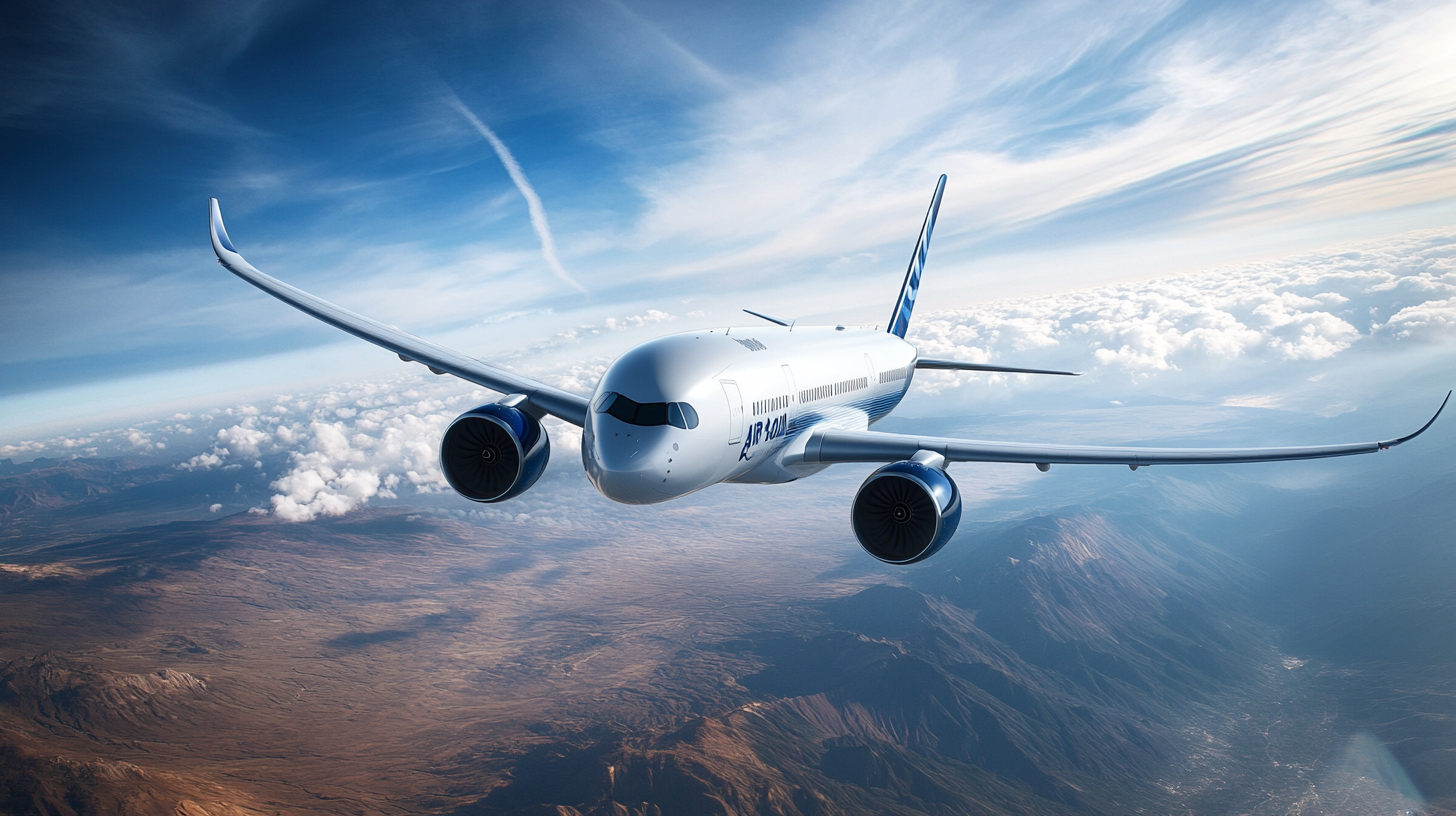
Organizations like Airlines for America have pledged to reach net-zero carbon emissions by 2050. Strategies encompass using SAFs, enhancing fuel efficiency, and investing in carbon capture technologies. This unified commitment signals the industry’s recognition of its responsibility to address climate change, as outlined in Aviation industry’s roadmap to net-zero emissions , and its willingness to invest in transformative changes that can lead to a sustainable future for aviation.
Emerging Focus Areas and Future Outlook
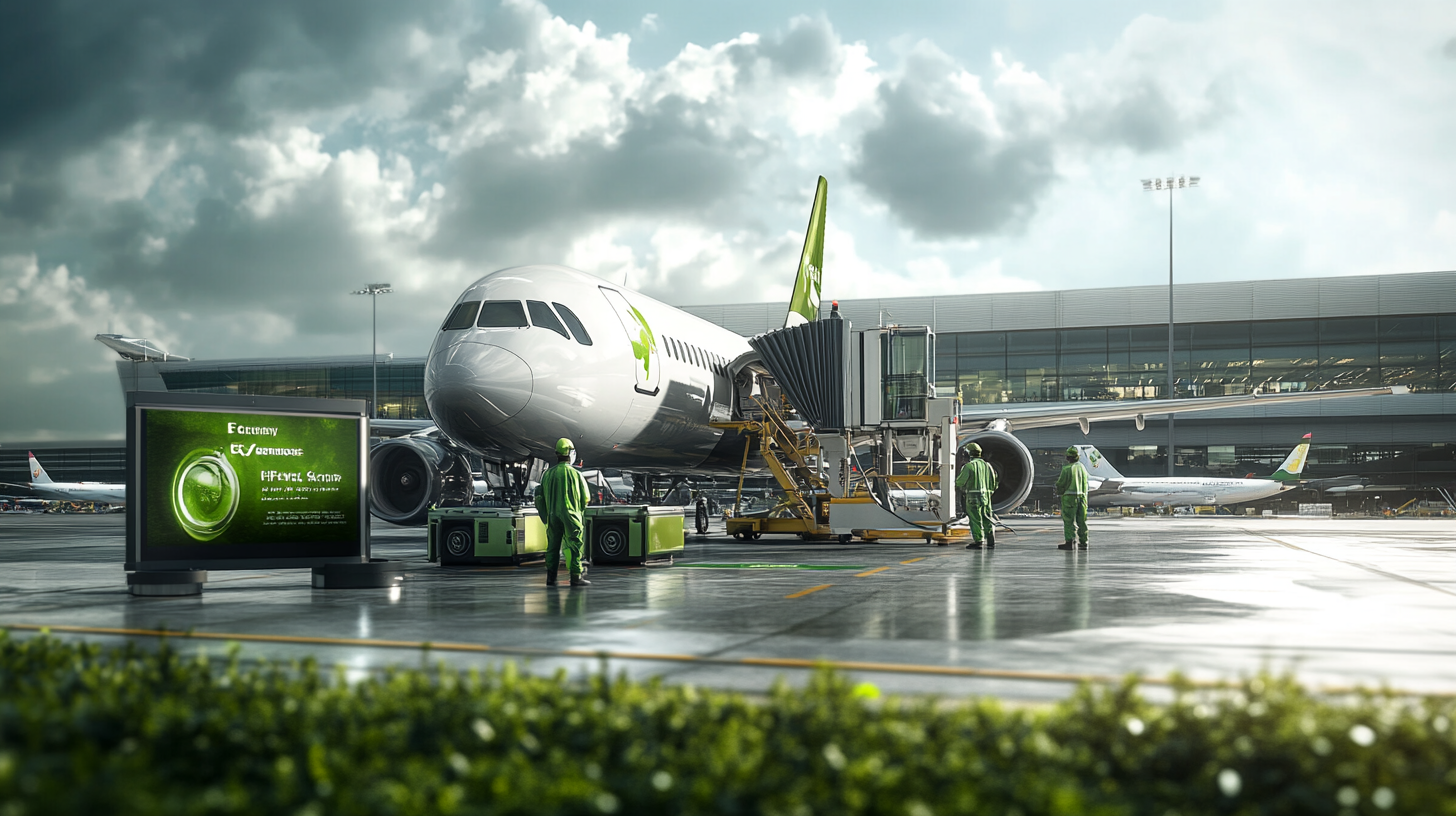
Minimizing Contrail Impacts

Contrails contribute to atmospheric warming. Efforts to minimize their formation through optimized flight paths and altitudes are underway, utilizing advanced meteorological data and AI. These innovative approaches demonstrate how technology can mitigate environmental impacts, as explored in Strategies to reduce contrail-induced warming . By adjusting flight operations, the industry can reduce the climate effects of contrails without significant cost or efficiency penalties.
Synthetic E-Fuels
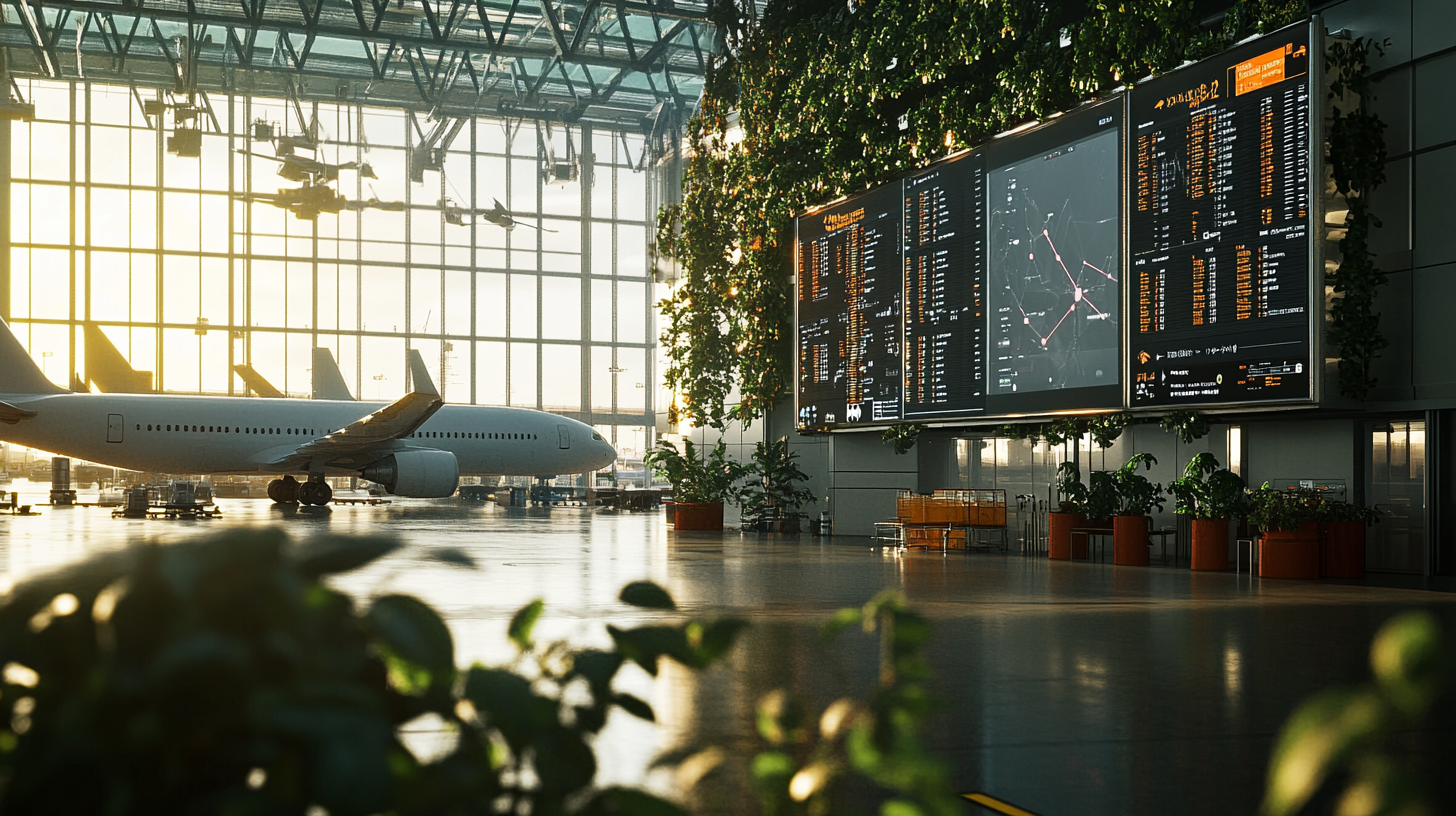
Synthetic e-fuels produced using renewable energy offer a carbon-neutral alternative to traditional fuels. Research and development in this area aim to make these fuels commercially viable. If successful, synthetic e-fuels could play a significant role in decarbonizing long-haul flights, as detailed in The potential of synthetic e-fuels for aviation , providing a sustainable solution where electrification is challenging.
Artificial Intelligence for Efficiency
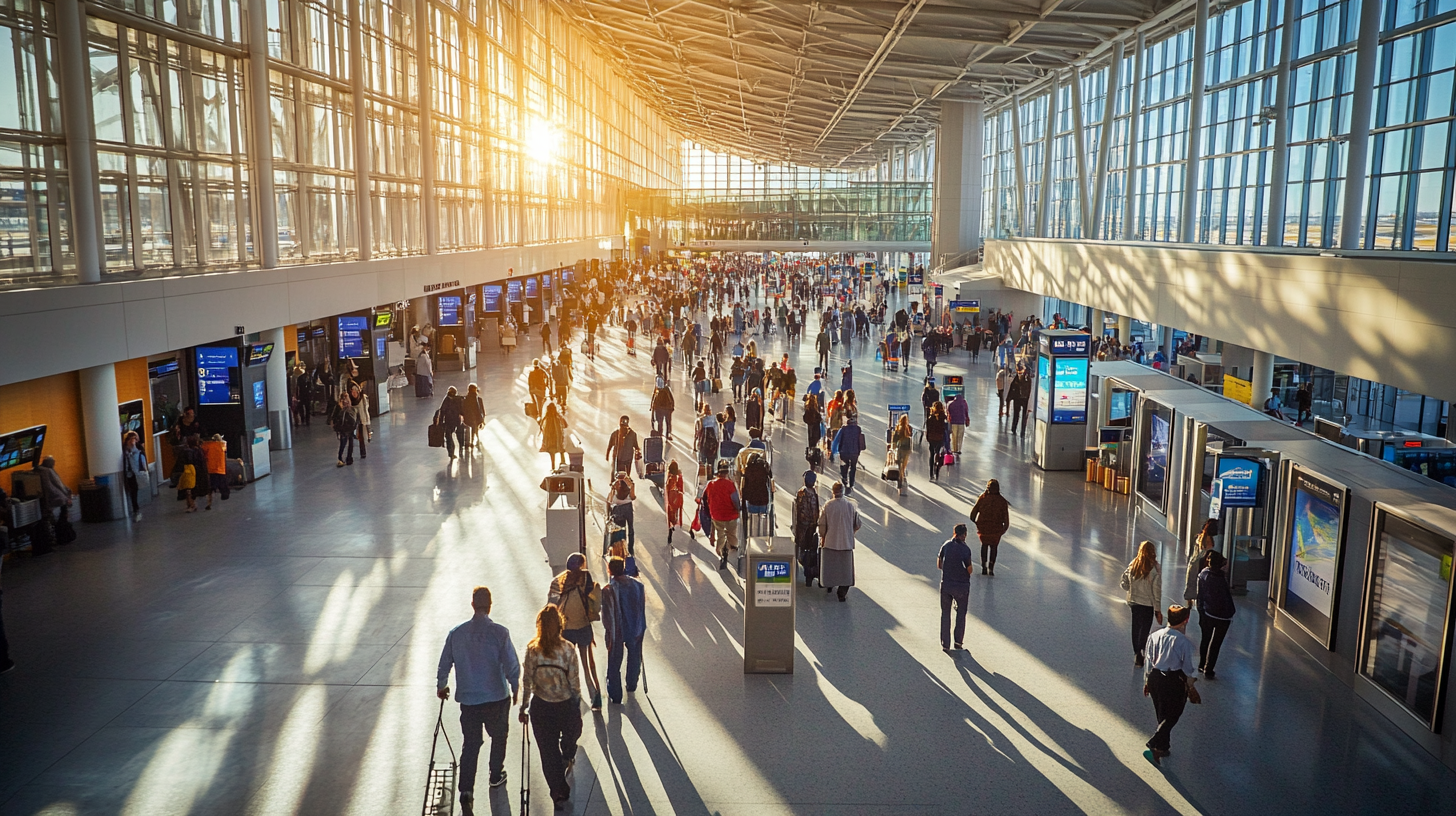
AI technologies optimize flight operations, from route planning to predictive maintenance, enhancing efficiency and reducing emissions. The integration of AI represents a significant technological advancement in aviation’s pursuit of sustainability, as discussed in AI’s role in optimizing aviation efficiency . By harnessing data and machine learning, airlines can make smarter decisions that benefit both the environment and their operational performance.
Transparency in Emissions Reporting
Greater transparency in CO₂ emissions enables travelers to make informed decisions. Airlines are increasingly providing detailed emissions data, fostering accountability and consumer engagement. This increased openness not only satisfies consumer demand for greater awareness, as seen in The importance of transparent emissions reporting in aviation , but also stimulates competition among airlines to adopt more sustainable practices.
Final Thoughts
The aviation industry’s pursuit of sustainability reflects a comprehensive effort to address one of the most pressing environmental challenges of our time. Through technological innovation, strategic initiatives, and collaborative efforts, airlines and airports are making significant progress toward greener skies. Travelers, too, possess the power to influence this transformation. By making conscious choices and supporting eco-friendly practices, passengers contribute to a collective movement towards sustainable air travel.
Follow us back to Seat 5A for more insights and updates on sustainable travel practices. Together, these endeavors chart a promising flight path toward a more environmentally responsible future, where the benefits of global connectivity no longer come at the expense of our planet.






